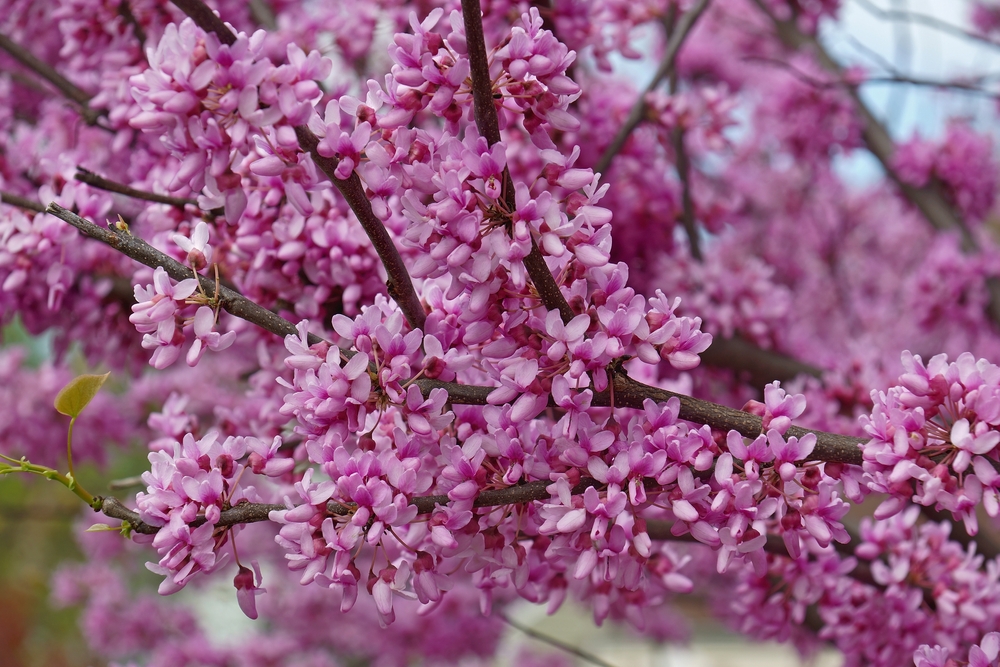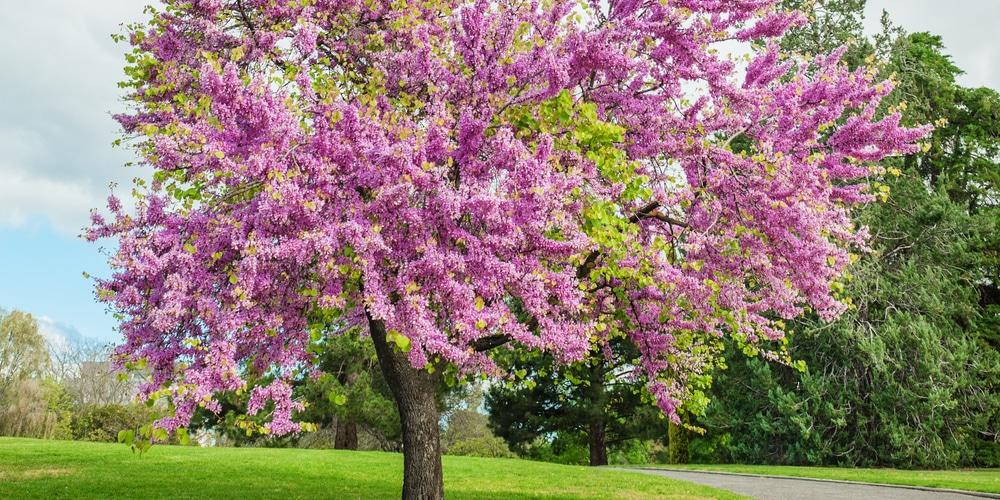The eastern redbud tree is a small to medium-sized deciduous tree native to the central and eastern US. Eastern redbud trees are also endemic to parts of Canada and central Mexico. Across its distribution, this tree can be found in small groups or as isolated individuals.
They are known for their beautiful purple blossoms and their distinctive heart-shaped leaves.
Learn about the pros and cons of plating an eastern redbud tree.
Eastern Redbud Tree Pros
- Small stature tree suitable for tight planting spaces
- Aesthetic appeal of more ornamental tree species without the sensitive tolerances
- Broad shade tolerances, from direct sunlight to mostly shaded
- Minimal fruit, leaf, and branch litter
- Requires minimal maintenance over the tree’s life
- Unlikely to interfere with existing above and below-ground utilities
- Endemic species found throughout a broad range
Eastern Redbud Tree Cons
- Sensitive to environmental changes while establishing
- Sensitive to poor and rapid draining soils
- Lacks shade capacity of other larger species
Eastern Redbud Tree Biology
The eastern redbud tree grows as an understory species in natural landscapes. It is typically found near bodies of water with well-draining, loamy soils. The eastern redbud tolerates a spectrum of shade environments but grows more vigorously on south-facing slopes that receive ample sunlight.
At maturity, the eastern redbud reaches a height of 10 to 25 feet with a canopy spread of 15-25 feet. Structural pruning during establishment and adolescence can influence the tree’s mature size and form.
This tree is a hardy species that can tolerate a broad range of soil pH levels but typically thrives in neutral to alkaline soils. Eastern redbud tree requires structured soil with high amounts of organic matter to establish and grow; it does not tolerate anaerobic conditions or sites with poor soil structure.
The tree blooms in early spring with pink or purple flowers (depending on the cultivar), complimenting landscaped gardens and other ornamental flowering species. The eastern redbud tree has simple, heart-shaped leaves with smooth margins.
Many municipalities have adopted the Eastern redbud tree and its cultivars as a street and park landscape tree because of its broad tolerances and hardy biology.
Pests and Diseases
eastern redbud tree has several pests that feed or host on it, including Japanese beetles, treehoppers, leafhoppers, caterpillars, borers, and webworms. These pests do not usually cause extensive damage to the eastern redbud tree, except for the Japanese beetle.
Japanese beetles are small, iridescently colored scarab beetles found throughout parts of the midwest and all of the eastern United States. Residents of the Eastern US hoping to plant an eastern redbud tree should pay special attention to Japanese beetles, as the beetle’s feeding habits can significantly reduce the tree’s ability to photosynthesize.
If Japanese beetles become a problem for your eastern redbud tree, consider a chemical or mechanical control recommended by the USDA’s Animal and Plant Health Inspection Service (APHIS).
To a lesser extent, diseases are also a problem for eastern redbud trees. The eastern redbud tree is susceptible to canker, mildew, blight, and several other wilt and dieback diseases. While contracting these diseases is not uncommon, the trees rarely fail because of them.
Diseases that affect the eastern redbud tree rarely require chemical controls. The pruning of diseased plant material from the tree with sterile shears is usually sufficient to control disease spread.
Who Should Plant an Eastern Redbud Tree?
The eastern redbud tree lives in USDA hardiness zones 5 through 9. To check what hardiness zone you live in, reference the USDA hardiness zone map.
Homeowners living in hardiness zones 5-9 in the United States, or homeowners living in eastern Canada or central Mexico, can plant eastern redbud trees in late fall so long as they have somewhere between 50 and 90 square feet of high-quality planting space.
Homeowners with existing trees on their property may consider adding an eastern redbud tree to their landscape as an understory species to further diversify their landscape’s aesthetic appeal and natural viability.
Homeowners with limited arable land or height restrictions looking for a shade tree may consider eastern redbud trees. The redbud’s popularity makes it easy to source from local nurseries, and its taproot root structure means root systems are unlikely to damage buried utility pipes.
Homeowners unable to maintain a large tree may consider an eastern redbud tree. If saplings are pruned to establish a strong central leader, this tree requires little pruning throughout its life. Its diminutive stature also means most pruning can be maintained without special equipment or professional arborists.
Conclusion
While their vibrant color and unique leaf shape may make them a tempting addition to your front yard, there are some pertinent concerns to consider before planting an eastern redbud tree. This tree is sensitive to its environment and soil and is susceptible to certain pests and diseases.

